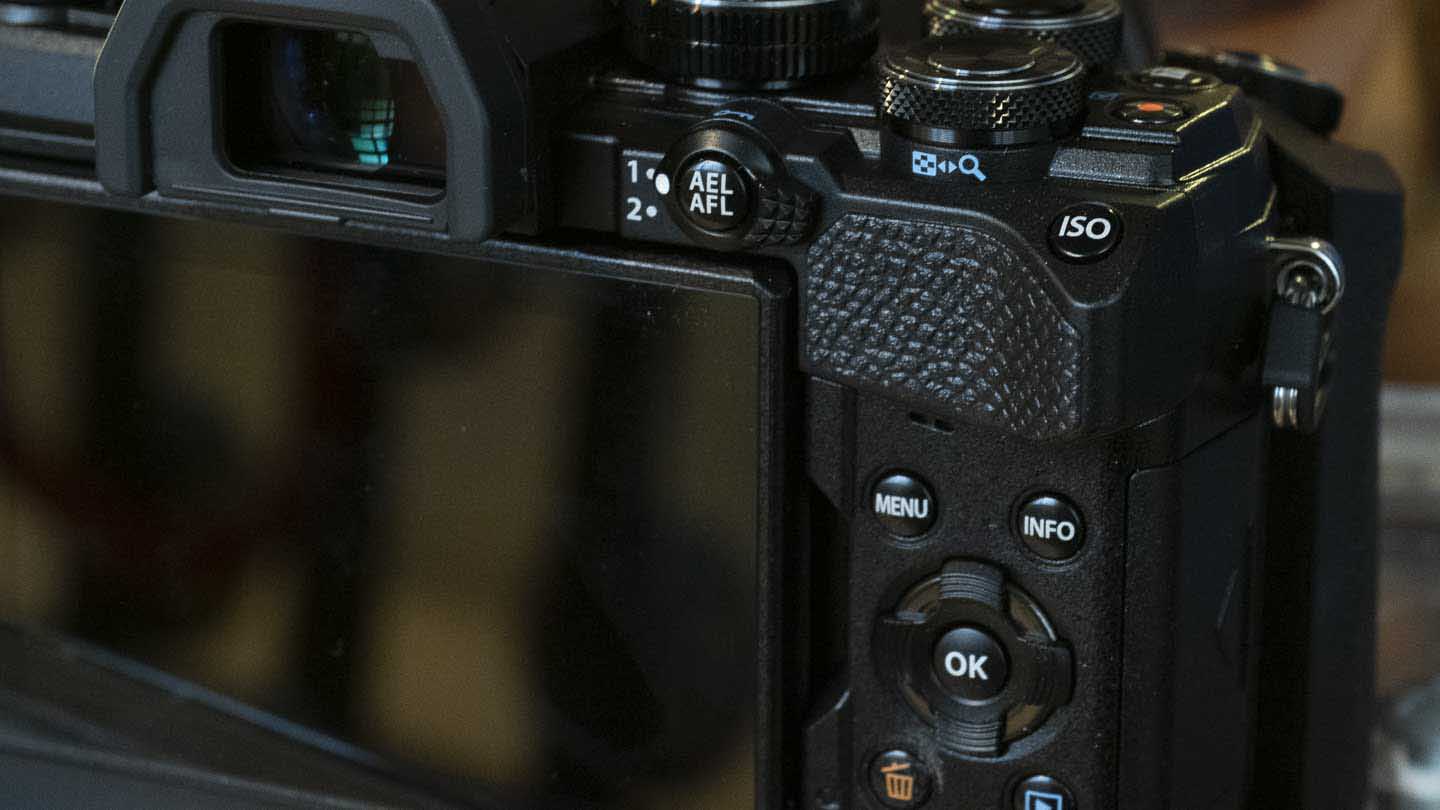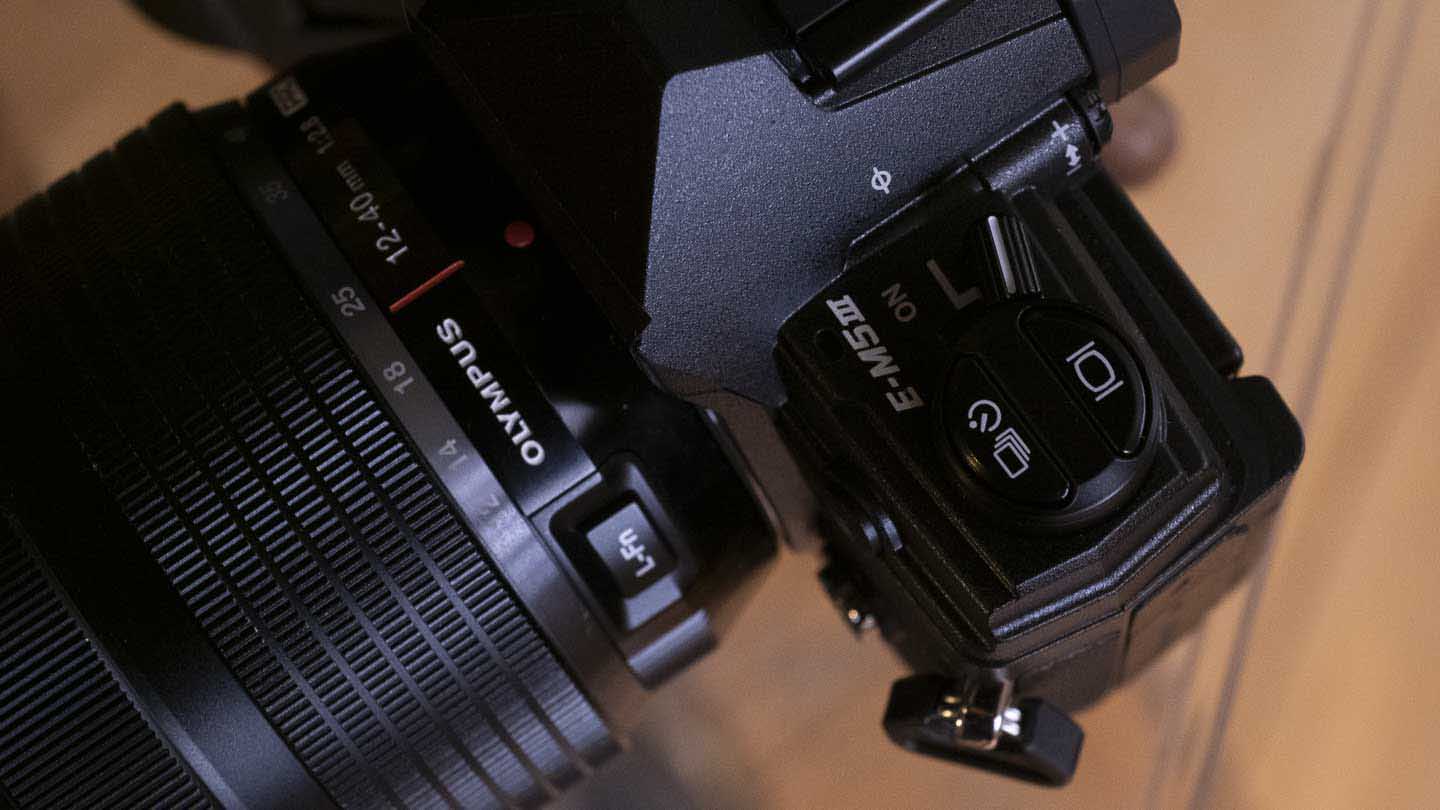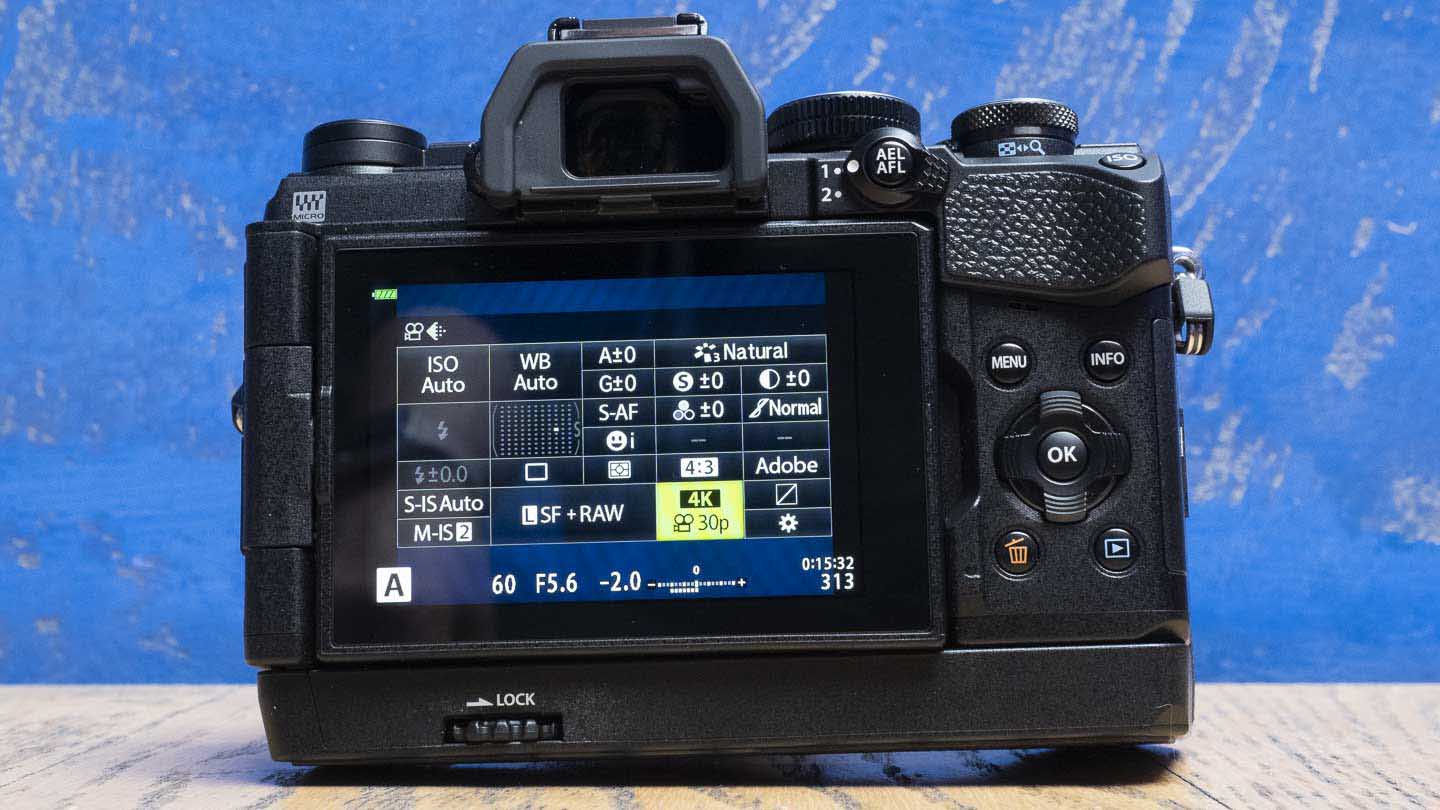Snap Verdict
Technically the Olympus OM-D E-M5 Mark III sits below the OM-D E-M1 Mark II in Olympus’s interchangeable lens camera line-up but it has an updated processor that gives its smaller body a slight edge for speed and AF performance. It also produces nice images and the stabilisation system is incredible, enabling you to hand-hold the camera and get sharp images with exposures measured in whole seconds. In addition, it does a good job with video, although if you’re really serious about shooting moving images you might want to look at the Panasonic Lumix G90 which has a true Log mode.
Olympus OM-D E-M5 Mark III Price & Release Date
The Olympus OM-D E-M5 Mark III price tag is £1,099.99 for the body only. The E-M5 III price rises to £1699.99 fro the M.Zuiko Digital ED 12-40 F2.8 PRO lens kit. Or you can get the E-M5 Mark III with the M.Zuiko Digital ED 12-200 F3.5-6.3 lens at a price of £1599.99.
Available in black and silver, the Olympus OM-D E-M5 Mark III release date was 15 November 2019.
Features
Olympus has given the E-M5 Mark III the same 20.4Mp Live MOS sensor as the OM-D E-M1 Mark II. The processor is also listed as the same TruePic VIII engine, but according to Olympus UK’s Clare Harvey-May, it’s been updated for a bit more oomph.
This sensor and processor pairing enables sensitivity settings up to ISO 25,600 with up to ISO 6400 available in the automatic settings.
The OM-D E-M5 III’s chip has a couple of other tricks up its sleeve. There’s 5-axis image stabilisation (IS), for example, and Olympus’s respected sensor cleaning system. In fact, Olympus E-M5 III has the same electronic membrane over the imaging chip as the E-M1X. This is claimed to reduce the chance of dust sticking in comparison with the OM-D E-M5 Mark II.
Autofocus
Like the OM-D E-M1 II, the OM-D E-M5 III has a 121-point (all cross-type) hybrid autofocus (AF) system. Having a hybrid system means there’s phase-detection and contrast-detection focusing. As it’s a mirrorless camera, the phase detection pixels are on the imaging sensor.
Olympus has worked on the AF algorithm to make the focusing more sensitive and consistent even in tricky situations. In addition, the E-M5 III uses AF data from the Live View feed and recorded images to improve tracking of subjects that move unpredictably.
The AF point can be set via one of six modes, Single, 5-point, 9-point, 25-point, 121-point or small.

Continuous Shooting
Using the mechanical shutter, the OM-D E-M5 III can shoot at up to 10fps (frames per second) in high-speed sequential shooting mode with focus and exposure fixed at the start of the burst. If you want to focus continually, you need to use the Sequential Low setting, which gives a maximum shooting rate of 6fps with the mechanical shutter and 10fps with the electronic shutter.
Selecting Pro Capture mode lets you shoot at 30fps. When this is activated, the OM-D E-M5 Mark III starts shooting as soon as the shutter release is pressed halfway.
When the shutter release is pressed fully, the camera starts to save images but up to 14 files from the moment before the shutter was fully pressed are also recorded. It’s useful for capturing split-second moments like a balloon bursting or water splashing.
There are also clever shooting options such as Live Composite, Live Time, Live Bulb, Focus Bracketing, Focus Stacking and a 50Mp High Res Shot mode.
Olympus’s Live Composite mode is especially useful for shots of traffic trails, fireworks and light painting. It enables you to overlay a shot with a series of images captured at the same shutter speed. However, after the first image, only the brighter parts of subsequent images are visible.
As before, the High-Res Shot mode is a tripod-only option. When this mode is activated, the E-M5 III shifts the imaging sensor by 0.5-pixel movements between 8 shots. These are then merged into one image that’s equivalent to 50Mp.

Focus Bracketing and Focus Stacking
In Focus Bracketing mode the Olympus E-M5 III can record up to 999 shots with one press of the shutter release. The camera shifts the focus point slightly between each shot and the size of this shift can be set to one of 10 levels. Once the images have been recorded the images can be transferred to a computer and merged into a single picture with greater depth of field than is possible with one file.
This merging can be carried out with the supplied Olympus Workspace image editing software or and third party package.
Meanwhile, in Focus Stacking mode, the E-M5 III automatically merges 8 images with different focus points.
Video
Olympus has upgraded the video capability of the OM-D E-M5 Mark III in comparison with the Mark II model. The new camera is capable of shooting C4K 24p video at up to 237Mbps or 4K 30p, 25p, 24p video at 30p 102Mbps.
In addition, Full-HD video can be shot at up to 120p for slow-motion playback.
Further good news is that there’s a Flat picture mode. This isn’t as flat at the Log mode introduced by the E-M1X, but it gives a bit more scope for post-capture grading.
There’s also a mic jack built-in, rather than in an optional grip and the video autofocus performance has been improved.
Sadly, there’s no headphone port so you can’t monitor audio that’s recorded in-camera.
Battery
The Olympus OM-D E-M5 Mark III uses the BLS-50 battery but it’s upgraded to 8.4Wh. This gives a more stable and consistent power supply.
Standard CIPA testing indicates the battery life is 310 shots or 110 minutes of movie recording.
It’s also possible to charge the battery while it’s in the camera using a USB power bank or cigarette lighter socket. However, the camera cannot be powered via those supplies. That means you can only charge the battery, not shoot with the camera while using those power sources.

Build and Handling
At 85.2×49.7×125.3mm and 366g body only (414g with the battery and SD card), the Olympus OM-D E-M5 III is smaller and lighter than the E-M5 Mark II. This has been enabled in part by a reduction in the size of the image stabilisation (IS) system.
Despite the shrinkage, Olympus still claims that the IS can enable shutter speeds to be slowed by 0.5Ev more than the Mark II. That means it’s up to 5.5Ev with a non-stabilised lens and 6.5EV with the M.Zuiko Digital ED 12-100mm F4.0 IS PRO at 100mm (200mm equivalent).
Like the OM-D E-M5 II, the Mark III is fully weather-sealed. And overall, the camera feels pretty robust. It may be made from polycarbonate, but it’s doesn’t feel flimsy or too lightweight.
Olympus has also significantly beefed-up the front grip and made the thumb rest more pronounced and it makes the camera feel more comfortable and secure in your hand.

Viewfinder and Screen
Although the OM-D E-M5 Mark III has a 2.36 million-dot viewfinder like the Mark II, Olympus has upgraded it to an OLED panel. This makes the colours brighter and more vivid.
I found it a very comfortable viewing experience.
At 27mm, the eyepoint is also quite long which makes the viewfinder easier to use with glasses.
On the back of the camera there’s also a 3-inch 1,040,000-dot touch screen. This is now a vari-angle hinge for easy viewing from a range of shooting positions. One issue for videographers, however, is that the mic port is in the way of the screen’s articulation. It means that unless you keep the screen folded in against the camera’s back when you use an external mic, you’re fighting against the cable.

Controls
Although the E-M5 III is immediately recognisable as an OM-D camera, and it looks very similar to the Mark II, there are a few changed to the control arrangement. For a start, the mode dial is now to the left of the viewfinder.
In addition, the Photo Story mode has gone from the mode dial but there’s a much more useful custom mode instead.
It took me a while to spot how to switch between using the viewfinder and screen, or let the camera switch automatically. That’s because the control is now to the left of the viewfinder on the top-plate.
The control to access the drive mode options is just above it.
As I’ve found before with Olympus cameras, there are a few glitches. The Info button that allows you to toggle through the various displays, for example, has a habit of skipping the electronic level view. If this happens you have to turn the camera off, re-start it then use the button again.

Read: How to use the Olympus OM-D E-M1X Intelligent Subject Tracking
Image Quality
The images are also impressive. The top sensitivity setting, ISO 25,600 is a step too far unless you’re looking to record an event and you’re not too worried about the quality of the image, but step down to ISO 12,800 and the results are much better.
If you really hunt for it, you’ll find a hint of noise when you check images shot at ISO 400 at 100% on screen. But it’s nothing to be alarmed about. The noise becomes more evident as the sensitivity rises, but it’s controlled well up to around ISO 6,400.
Micro Four Thirds cameras aren’t really known for their extensive dynamic range. If you plan on underexposing to protect the highlights in an image from the E-M5 Mark III, I recommend that you avoid brightening the shadows by more than 2Ev, 2.5Ev at the outside.
Olympus gives you plenty of colour options on the OM-D E-M5 Mark III, so you can usually find something to suit most situations. My fall-back setting is always the Natural Picture Mode, which is reliable in many situations. I liked to mix it up now and then, and the Art Filter Bracketing can be fun if you’re not sure what look you want to achieve.
As the viewfinder and screen show images as they will be captured, you have the opportunity to ensure that both colour and exposure are what you want. I reduced the exposure suggested by the general-purpose ESP metering system by around 1/3EV on many occasions. As well as making images a tad darker, this helps to boost the saturation slightly.
Sample Images
Follow the link to browse and download full-resolution images
Sample Video
This 4K video was shot on the OM-D E-M5 Mark III. Check out the autofocus system and image stabilisation performance.
This video was shot on the Olympus OM-D E-M5 Mark III in C4K video mode.
Verdict
The Olympus OM-D E-M5 Mark III is a little powerhouse of a camera. It produces images with a good level of detail and noise is controlled very well for most of the sensitivity range. Naturally, it can’t quite match a full-frame camera for image quality, but it does impressively well and has a significant size benefit.
Olympus’s image stabliisation system is also second to none and it’s a major advantage. There are a few exceptions, but it means that you can leave your tripod at home for many shooting situations. And with care, there’s no need for a gimbal to steady video footage either.
However, it’s the low light performance of the autofocus system that has really surprised me. I expected it to struggle in the very low light of the early briefing venue, but actually it did a great job. That performance continues into bright light conditions, delivering sharp images of moving subjects.
I like the Olympus OM-D E-M5 Mark III a lot. It’s a great size and has a very attractive feature set. I love that it has a vari-angle screen, it’s just a shame that it fouls on the cable if you plug-in an external microphone.
[FAG id=89127]




